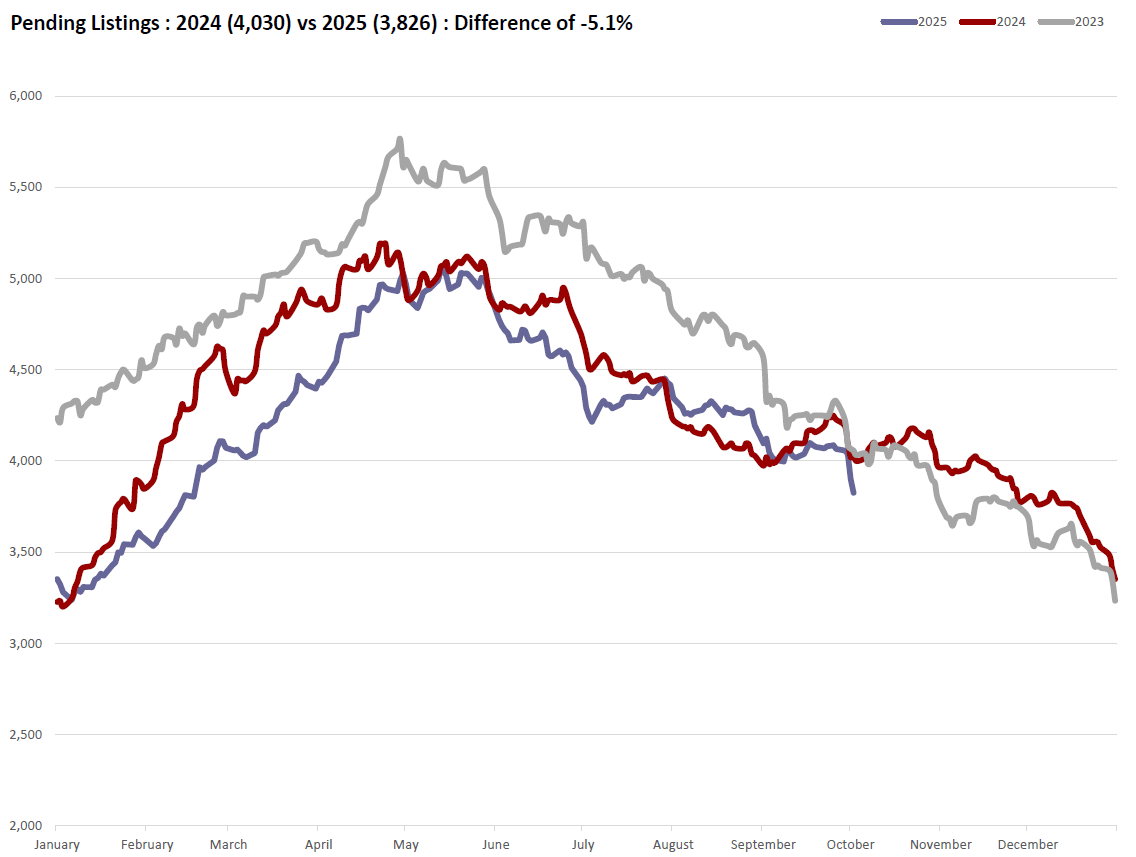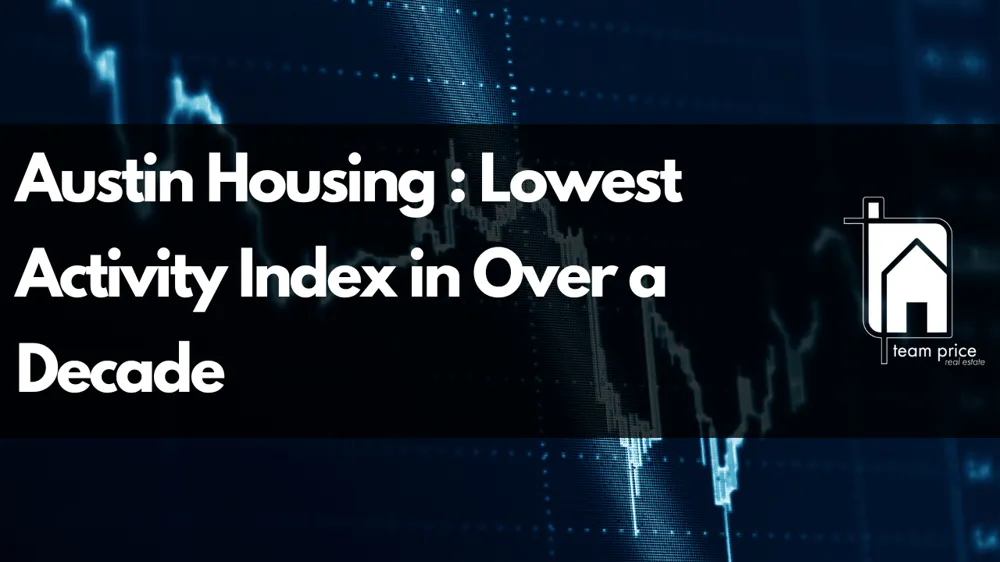Austin Housing : Lowest Activity Index in Over a Decade
Published | Posted by Dan Price
Austin Real Estate Market Hits Lowest Activity Index in a Decade
The Austin housing market just posted its weakest activity level in more than ten years. Pending properties have fallen to their lowest count since February 2025, while active listings continue to climb, creating a rare combination of low demand and elevated supply.
Today, pending properties stand at 3,826, a steep decline from 4,030 at this time last year. That represents a year-over-year drop of 5.1%, the sharpest annual decline since July 2025. At the same time, active residential listings have surged to 16,375, up 13.8% year-over-year. This imbalance has pushed the activity index—a measure of pending contracts relative to total inventory—down to 18.9%, the lowest point recorded in more than a decade.

What This Means for Buyers
For buyers, this environment provides significant leverage. With more than sixteen thousand active listings available, buyers have a wider range of options than at any time in recent memory. The sharp decline in pending contracts means competition is thinner, allowing buyers to negotiate on price and terms. This is especially important as we head deeper into the fall season, a period that typically sees reduced buyer urgency even in strong years.
What This Means for Sellers
For sellers, the data sends a clear message: pricing strategy matters more than ever. With inventory up nearly 14% from last year and pending sales at their lowest level in eight months, listings that are priced too aggressively risk sitting idle. The current absorption rate shows buyers are selective, and homes that do not show clear value relative to the market will be passed over. In this type of market, competitive pricing and strong presentation are critical to attracting serious buyers quickly.
What This Means for Investors
For investors, the sharp decline in pending activity signals opportunity. The market’s absorption slowdown means that sellers—particularly those with vacant or underperforming properties—may be more willing to negotiate. With median home prices still down more than 20% from their 2022 peak, disciplined acquisitions at discounted pricing remain possible. The long-term growth trajectory of Austin real estate remains intact, but this current cycle provides entry points that were absent during the market’s overheated years.
Historical Context
This is the lowest activity index in more than ten years, underscoring just how unusual today’s market is. Even during the early months of the pandemic in 2020 or the slowdown in late 2008, the market had higher pending-to-active ratios. Today’s index of 18.9% means fewer than one in five homes on the market are under contract, a stark shift from the 40–50% ratios seen in strong demand years. The year-over-year pending decline of 5.1% is also the sharpest since July 2025, further highlighting the weakness in buyer demand.
Austin Housing Market Forecast
Looking ahead, the numbers suggest that the Austin housing market is unlikely to rebound quickly in the short term. Elevated inventory, slowing absorption, and the lowest activity index in a decade point toward continued buyer leverage and cautious seller strategy. Unless pending contracts stabilize and regain momentum, prices may remain flat or soften further through the remainder of 2025. The broader Austin real estate forecast remains favorable in the long-term, but today’s conditions reflect a period of recalibration that requires careful navigation by all market participants.
Related Articles
Keep reading other bits of knowledge from our team.
Request Info
Have a question about this article or want to learn more?


